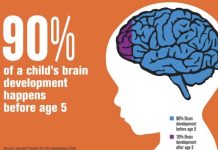Africa-Press – South-Africa. It is estimated that just under 90% of all the burden of disease associated with climate change will be carried by children under 5 years of age, writes Mark Tomlinson.
In 1989 the United Nations established World Population Day, which is observed on 11 July annually. That year was notable in that it was the year when the global population reached five billion.
On 15 November 2022, another milestone was reached when the world’s population reached 8 billion people. The theme for 2023 is ‘how to safeguard the health and rights of women and girls, and putting the brakes on Covid-19’.
While the 2023 theme sounds like it could only have been fashioned by a committee of bureaucrats in Geneva or New York, the issue of the health of women and girls and the continued impact of Covid-19 is, of course, absolutely critical. However, when the committee decided on the theme, they could not have known what July 2023 might offer up to upstage their planned theme.
Hottest day in 125 years
First up, Monday, 3 July broke the record for the hottest day globally in 125 years. It held that record for exactly 24 hours before Tuesday 4 July became the new record holder for the hottest day the world has ever experienced. According to the Guardian, an unofficial analysis suggests that we may have just seen the hottest seven days in a row for the last 120,000 years.
For people living in South Africa, heat is mostly something we take for granted and revel in, as we pity the sad Northerners having to deal with a Scandinavian winter or a UK summer. But the heat we are beginning to see is not simply the vagaries of ‘normal summer’ heat. We are talking about what happened during the 2003 heat wave in Paris when so many people died in such a short time that the morgues filled up and the city could not find storage for the corpses.
In his book ‘The heat will kill you first: Life and death on a scorched Planet’ Jeff Goodell describes how all living things on Earth have a Goldilocks zone – the temperature at which they have learned to survive and thrive. If that temperature rises too far and too fast, they die. We are starting to see this happen – not in 50 years’ time – but right now.
Goodell estimates that by 2070, 2 billion people will be living in extreme heat (defined as an average annual temperature of over 30 degrees Celsius) compared to 30 million today.
Meteorologists are also beginning to speak of the increasing likelihood not only of parts of the world becoming uninhabitable but also of extreme heat situations – known as ‘wet bulb’ events which will push humans beyond our capacity to survive.
A ‘wet bulb’ event is where the combination of dry heat and humidity exceeds the temperature of the human body. In this situation, humans are unable to sweat – as the sweat cannot evaporate – and so we become unable to cool ourselves down.
In the summer of 2015, two wet-bulb events in India and Pakistan killed around 4,000 people, while even British Columbia experienced a wet-bulb event in 2021 that killed at least 200 people.
Children are vulnerable to heat
Importantly, the actual temperature high in a wet-bulb event does not even have to be that high (the wet-bulb high in British Columbia was only 25°C), given that it is the combination of dry air, temperature and humidity. The novelist Kim Stanley Robinson opens his science fiction novel The Ministry for the Future with a fictional ‘wet bulb’ event where 20 million people die – a terrifying example of science fiction and reality coming together.
We know that certain groups, such as the elderly and those with existing respiratory diseases, are most at risk during extreme heat events. But one group is uniquely vulnerable to heat and other extreme environmental events – whether healthy or sick – and that is children.
In December 2022, the Asia-Pacific Regional Network for Early Childhood (ARNEC), in partnership with UNICEF, Save the Children and the Bernard van Leer Foundation, published a report entitled ‘Most Vulnerable to Most Valuable’. In it, they report on a scoping study of existing evidence for how climate change will impact young children.
They also make the case for putting young children at the heart of climate actions and environmental protection. Infants under 12 months, for example, are unable to regulate their temperature, and because they are immobile are not able to seek out cooler places or control their environment in any way. Crucially, children require more food and water per unit of body weight (compared to adults), and because their bodies are still developing, they are particularly vulnerable to environmental hazards and even small amounts of toxic chemicals – such as lead – can have lifelong consequences.
As repeated climate crises degrade our environment further we will see a burgeoning of infectious diseases such as dengue fever. It is estimated that just under 90% of all the burden of disease associated with climate change will be carried by children under 5 years of age. Children are also particularly vulnerable to air pollution as they breathe twice as fast as adults.
Newsletter
Weekly
Opinions Weekly
Opinions editor Vanessa Banton curates the best opinions and analysis of the week to give you a broader view on daily news happenings.
Sign up
Finally, in many places in the world, temperatures for large parts of the year are already becoming so high that schools are closing for longer periods of time, impacting on educational opportunities for a generation of children. As is so often the case, those without power and a voice (children in this instance) will carry the largest burden, not only of the long-term effects of climate breakdown but also its short- and medium-term effects.
That we are hurtling towards self-destruction appears now undeniable. That is unless you live down a YouTube conspiracy theory rabbit hole or believe that oil companies make useful contributions to society through their Corporate Social Responsibility Divisions.
Continuing as we are, in our hallucinatory denial of the damage we are wreaking on our planet, is senseless and criminal for those of us that have already lived most of our lives. But for children and future generations, our inaction, or in fact, our ongoing wanton avarice and destruction, could be seen as bordering on a crime against humanity.
– Prof Mark Tomlinson is co-director of the Institute for Life Course Health Development in the Department of Global Health at Stellenbosch University.
For More News And Analysis About South-Africa Follow Africa-Press






